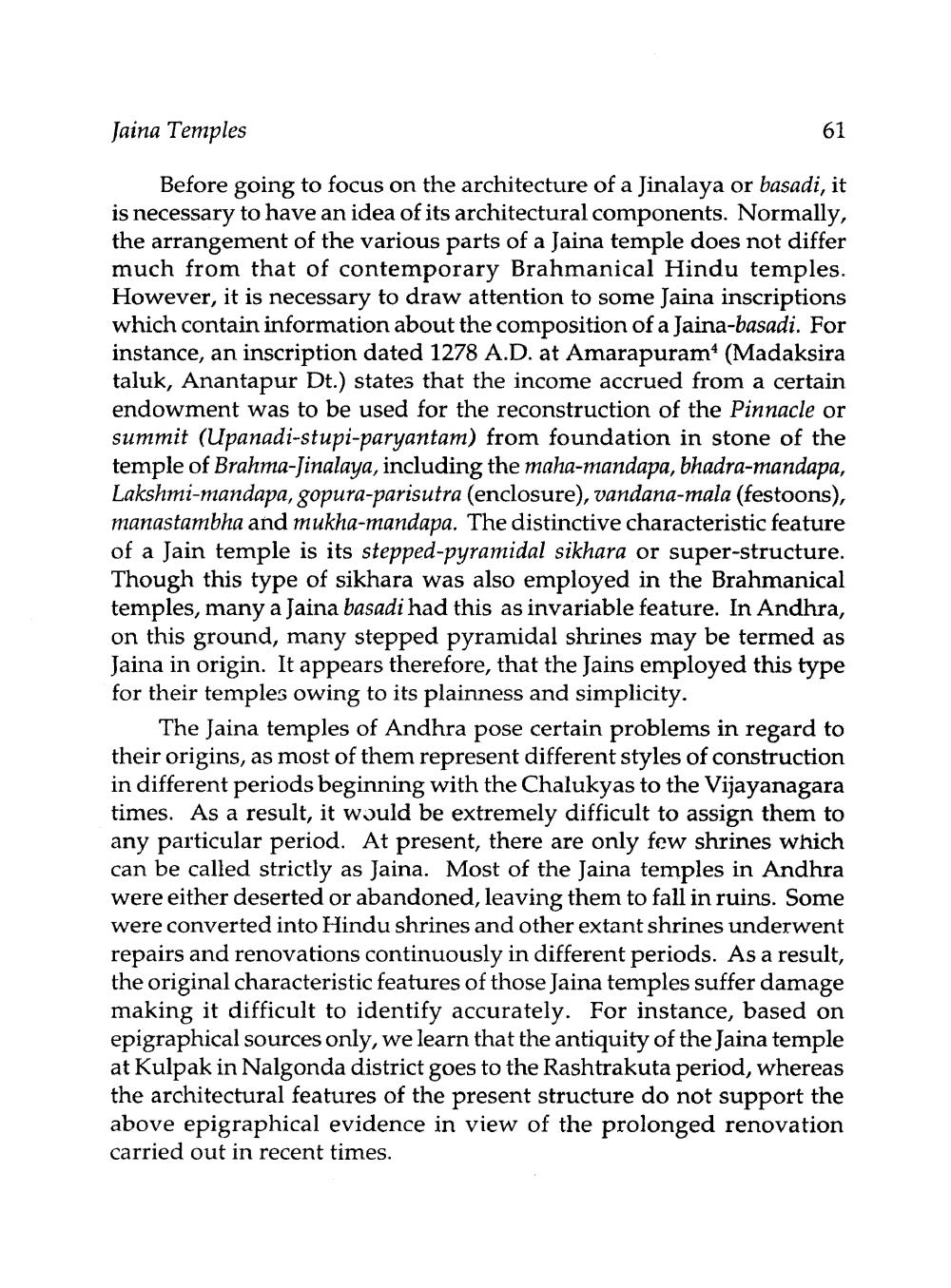________________
Jaina Temples
Before going to focus on the architecture of a Jinalaya or basadi, it is necessary to have an idea of its architectural components. Normally, the arrangement of the various parts of a Jaina temple does not differ much from that of contemporary Brahmanical Hindu temples. However, it is necessary to draw attention to some Jaina inscriptions which contain information about the composition of a Jaina-basadi. For instance, an inscription dated 1278 A.D. at Amarapuram1 (Madaksira taluk, Anantapur Dt.) states that the income accrued from a certain endowment was to be used for the reconstruction of the Pinnacle or summit (Upanadi-stupi-paryantam) from foundation in stone of the temple of Brahma-Jinalaya, including the maha-mandapa, bhadra-mandapa, Lakshmi-mandapa, gopura-parisutra (enclosure), vandana-mala (festoons), manastambha and mukha-mandapa. The distinctive characteristic feature of a Jain temple is its stepped-pyramidal sikhara or super-structure. Though this type of sikhara was also employed in the Brahmanical temples, many a Jaina basadi had this as invariable feature. In Andhra, on this ground, many stepped pyramidal shrines may be termed as Jaina in origin. It appears therefore, that the Jains employed this type for their temples owing to its plainness and simplicity.
61
The Jaina temples of Andhra pose certain problems in regard to their origins, as most of them represent different styles of construction in different periods beginning with the Chalukyas to the Vijayanagara times. As a result, it would be extremely difficult to assign them to any particular period. At present, there are only few shrines which can be called strictly as Jaina. Most of the Jaina temples in Andhra were either deserted or abandoned, leaving them to fall in ruins. Some were converted into Hindu shrines and other extant shrines underwent repairs and renovations continuously in different periods. As a result, the original characteristic features of those Jaina temples suffer damage making it difficult to identify accurately. For instance, based on epigraphical sources only, we learn that the antiquity of the Jaina temple at Kulpak in Nalgonda district goes to the Rashtrakuta period, whereas the architectural features of the present structure do not support the above epigraphical evidence in view of the prolonged renovation carried out in recent times.




